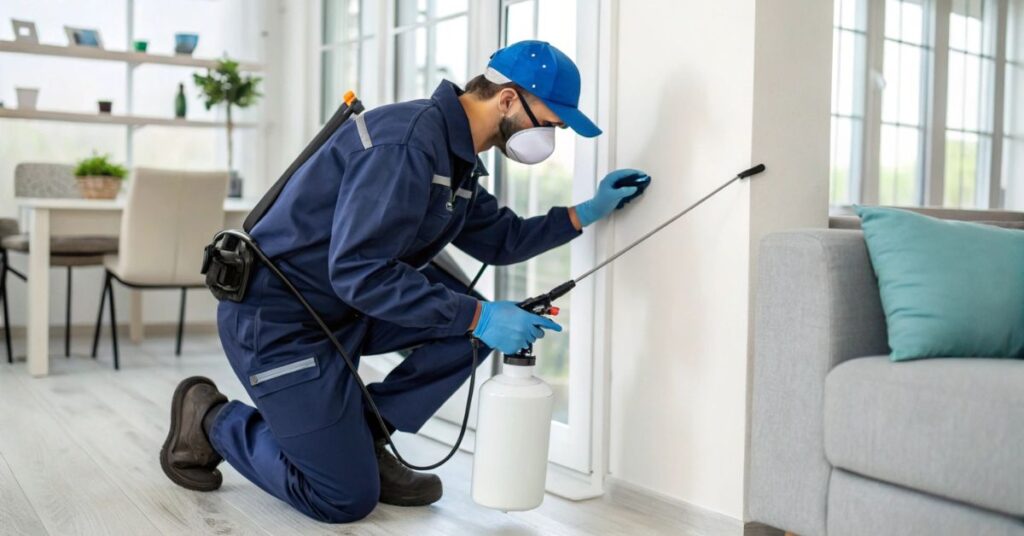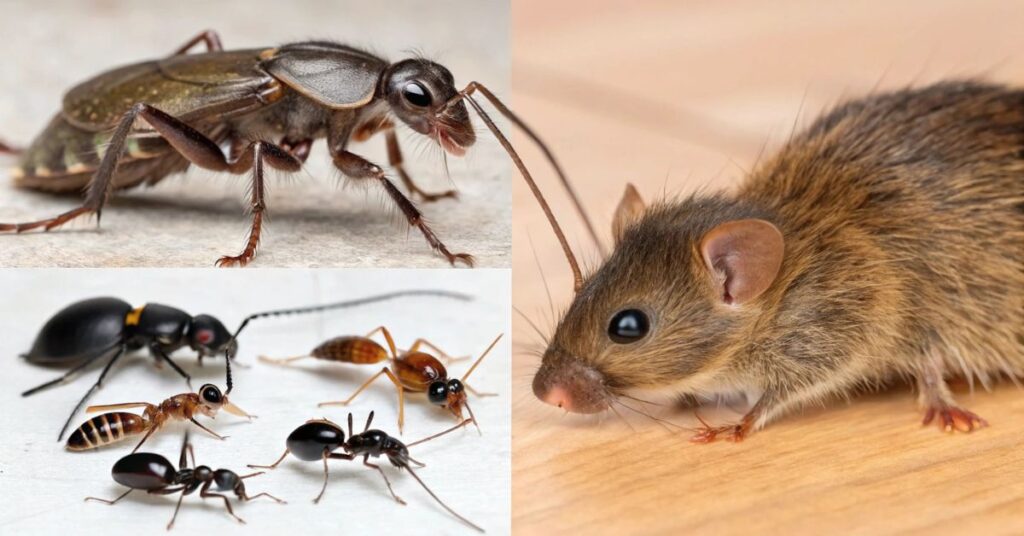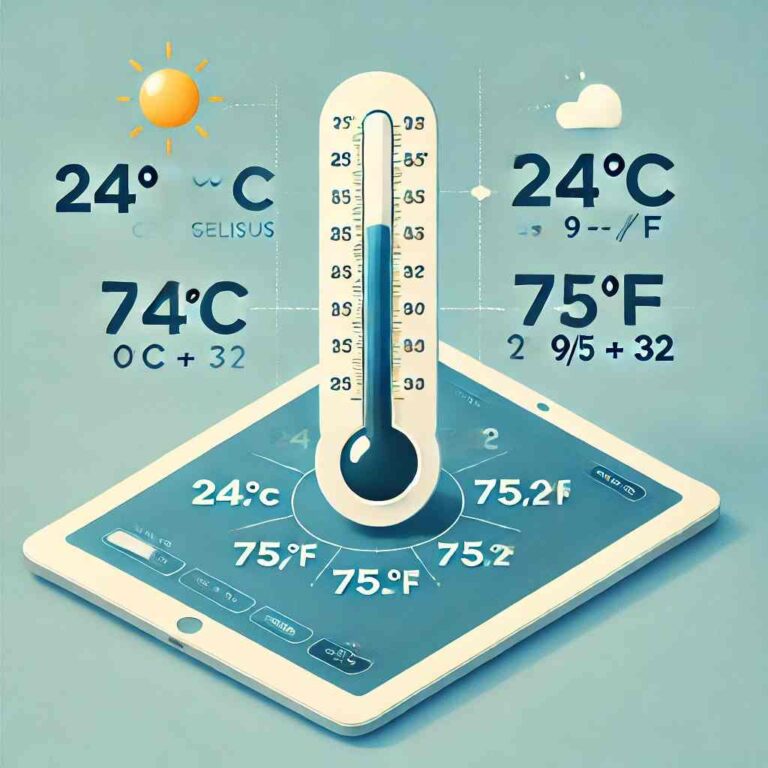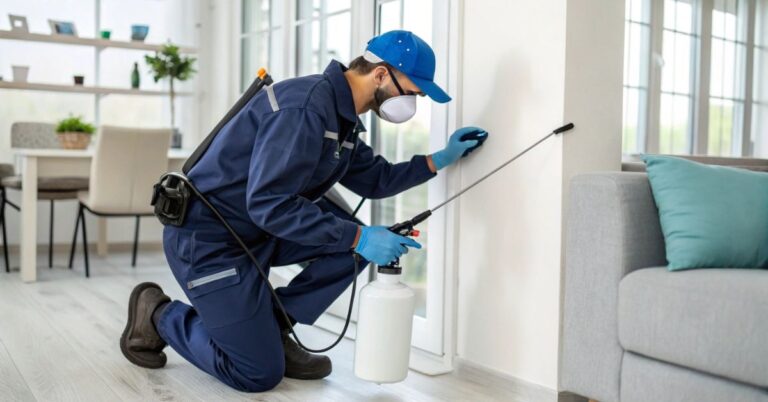
Pest control is essential because it directly impacts our health, comfort, and the safety of our living environment. Pests such as rodents, cockroaches, mosquitoes, and termites are more than just a nuisance—they can carry and transmit diseases, contaminate food, cause allergic reactions, and inflict severe damage to buildings and furniture. Without timely and effective pest control, what begins as a small problem can escalate into a major infestation, leading to expensive repairs and potential health emergencies. Pest control isn’t just about killing bugs; it’s about creating a clean, safe, and pest-free home that promotes well-being and peace of mind.
Health Dangers Posed by Common Pests
Pests are known carriers of a variety of pathogens and bacteria that can pose serious health risks to humans and animals. Cockroaches, for instance, can trigger asthma and allergies, especially in children, due to the proteins in their saliva and droppings. Rodents can spread diseases like hantavirus, leptospirosis, and salmonella through their urine and feces. Mosquitoes are notorious for transmitting malaria, dengue, and Zika virus, while ticks can spread Lyme disease. Even seemingly harmless insects like ants can introduce harmful bacteria to food sources. Ignoring pest issues isn’t just inconvenient—it can have a real impact on your health and quality of life.
Identifying the Most Common Household Pests

Household pests vary by region and season, but certain species are more likely to invade our homes. Ants often appear in kitchens, drawn by sugary and greasy food residues. Cockroaches tend to hide in warm, moist areas such as under sinks and behind appliances. Termites are silent destroyers, causing structural damage that can go unnoticed for years. Bedbugs hide in bedding and upholstery, feeding on blood while you sleep. Rodents such as rats and mice chew through wires, wood, and insulation, often nesting in walls and attics. Being able to identify these pests is the first step toward taking control and preventing serious infestations.
Signs That Indicate a Pest Infestation
Recognizing early signs of pest activity can prevent a full-blown infestation. Look for droppings in cabinets or along walls, which indicate rodents or insects. Damaged food packaging, especially gnaw marks, is a strong sign of rodent activity. You may notice greasy tracks along baseboards, scratching noises from within walls or ceilings, or nests made from shredded paper and fabric. Unusual odors, such as a musty or urine-like smell, can also point to hidden infestations. Seeing pests during the day often means the infestation is severe, as most hide during daylight hours. Spotting these indicators early allows you to act before the problem worsens.
How Pests Enter Your Home
Pests are remarkably resourceful when it comes to finding their way indoors. They often enter through cracks in walls, gaps around doors and windows, or holes in screens. Open food containers, dirty dishes, and garbage cans attract insects and rodents alike. Even your pets can bring fleas or ticks inside. Basements and attics offer the perfect shelter—dark, warm, and undisturbed. Plumbing lines and vents serve as highways for insects, especially in apartments or multi-unit buildings. Sealing up entry points, maintaining cleanliness, and proper food storage are effective ways to block their access and make your home less inviting to pests.
Natural Pest Control Solutions for Safer Living
For those who prefer a chemical-free approach, Pest Control JB offers effective and eco-friendly alternatives. Essential oils like peppermint, tea tree, and lavender can repel ants, mosquitoes, and even mice when sprayed around entry points. Vinegar and baking soda solutions are useful for cleaning surfaces while deterring insects. Diatomaceous earth is a safe, natural powder that dehydrates and kills many crawling insects without harming pets or people. Introducing beneficial insects, such as ladybugs or nematodes, can help control aphids and other garden pests naturally. Natural methods require consistency but can maintain a safe, pest-free environment with less environmental impact.
When Chemical Pest Control Becomes Necessary
While natural solutions are effective for prevention and minor issues, chemical pest control is often necessary for serious infestations. Pesticides, insecticides, and rodenticides are designed to quickly and effectively kill pests at all stages of life. They are especially useful against hard-to-reach or deeply embedded infestations like bedbugs or termites. However, chemical treatments come with safety concerns and should be used strictly according to the manufacturer’s instructions. It’s important to ventilate treated areas, store chemicals safely, and keep children and pets away during and after application. Responsible use of chemical methods can bring fast, long-term relief when natural efforts fall short.
The Role of Professional Pest Control Services
Hiring a professional pest control service is often the best solution for large or persistent infestations. These experts conduct thorough inspections to identify the root cause and customize a treatment plan based on the type of pest and level of infestation. They use commercial-grade tools and treatments not available to the public, which are more effective and long-lasting. Many companies offer regular follow-ups and preventative plans to keep your home protected year-round. Professionals are also trained to identify structural issues and nesting sites that homeowners may overlook, making them a valuable ally in keeping your home pest-free for the long haul.
Cost Considerations in Pest Control Services

The cost of pest control varies widely depending on the size of your home, the pest involved, and the extent of the infestation. Basic services, such as treating for ants or roaches, might cost between $100 and $300. More intensive treatments, like termite fumigation or bedbug extermination, can run into the thousands. Most pest control companies offer free inspections and customized quotes, and many now provide bundled annual plans with routine inspections and maintenance treatments for ongoing protection. While the upfront cost may seem steep, professional pest control often saves money by preventing long-term damage and repeat infestations.
Seasonal Changes and Pest Behavior
Different pests become active during different times of the year. In the spring and summer, warm weather wakes up ants, mosquitoes, and wasps, all eager to find food and build colonies. These seasons require extra vigilance around outdoor garbage, standing water, and open food. In the fall, rodents and spiders begin seeking warmth, often slipping into homes through small openings. Winter pest control focuses on rodents nesting indoors and occasional cockroach activity in heated buildings. Understanding these seasonal behaviors allows you to adapt your pest control strategies year-round and stay ahead of potential infestations.
Pest Control That’s Safe for Pets
Pet owners must be cautious when using any pest control method. Many pesticides and traps can be toxic or harmful to animals if ingested or touched. When using sprays, powders, or bait stations, make sure they are placed out of reach or use pet-safe versions clearly marked on the label. Natural repellents, such as vinegar or essential oils (only pet-safe ones), can be safer alternatives. Fleas and ticks are common pet-related pests, so maintaining pet hygiene and using vet-approved flea treatments is key. Always inform your pest control provider about your pets so they can tailor their treatment plan accordingly.
The Future of Eco-Friendly Pest Control
Green pest control is on the rise, focusing on environmental responsibility without compromising effectiveness. Eco-friendly approaches often use integrated pest management (IPM), which combines biological, cultural, and mechanical tools with minimal chemical use. These methods include physical barriers, habitat removal, pheromone traps, and the use of natural predators to control pest populations. Many eco-conscious pest control companies now offer plant-based treatments and biodegradable products that are safe for families, pets, and the planet. As consumer demand grows for sustainable solutions, the future of pest control is moving toward smarter, safer, and greener innovations.
Simple Habits That Prevent Pest Problems
Preventing pests starts with everyday habits. Keeping your kitchen clean and food stored in airtight containers can drastically reduce pest attractions. Regularly taking out the trash, wiping down counters, and not leaving dirty dishes in the sink are small actions that have a big impact. Sealing gaps in walls, doors, and windows prevents entry points, while fixing leaks removes water sources. Yard maintenance, like trimming bushes and clearing debris, helps deter outdoor pests from moving closer to your home. The more proactive you are, the less likely you’ll face a serious pest issue down the road.
Why Routine Pest Control Is Worth It
Routine pest control offers long-term peace of mind by addressing problems before they start. Instead of waiting for an infestation to get out of control, scheduled treatments keep pests at bay year-round. Many pest control providers offer seasonal plans that target common pests during peak activity times. These regular visits include inspections, treatments, and preventive advice tailored to your home. Routine service not only protects your property value but also helps maintain a cleaner, healthier living space. In the long run, the investment pays off by avoiding costly exterminations and structural repairs caused by undetected infestations.
Conclusion
Pest control isn’t just a reactive solution to creepy-crawly problems—it’s a proactive lifestyle choice that protects your health, home, and peace of mind. Whether you prefer natural remedies or professional services, the key to success lies in early detection, routine maintenance, and consistent preventive measures. With the right strategies, pests don’t stand a chance. Stay informed, stay prepared, and you’ll enjoy a cleaner, safer living space all year long.







